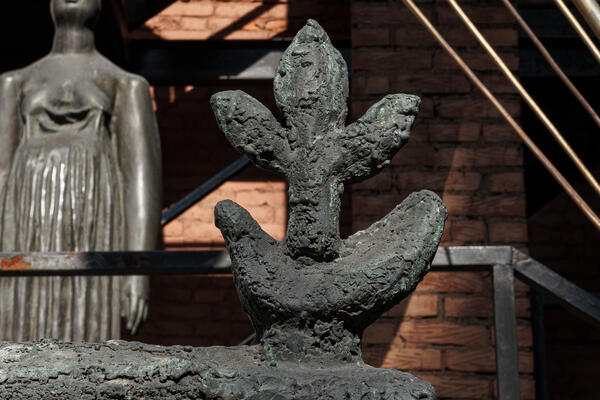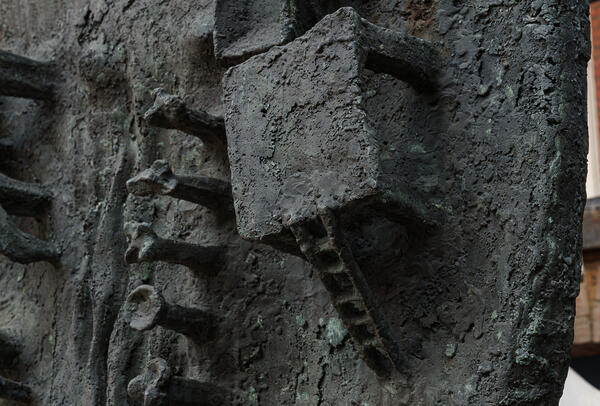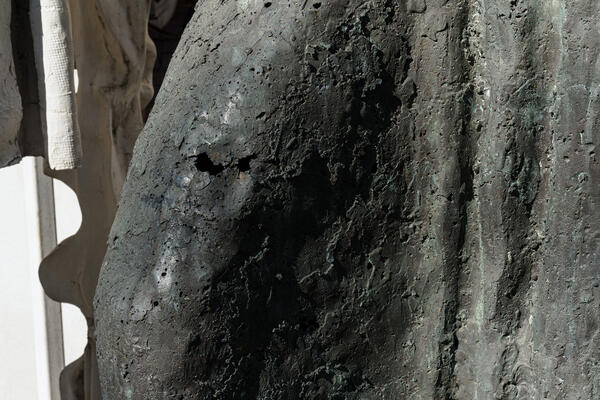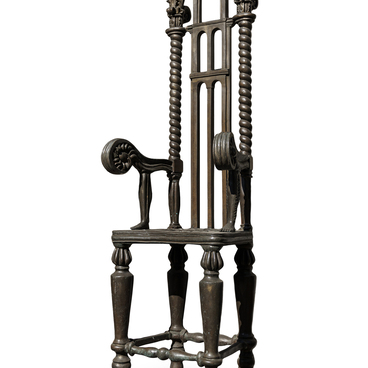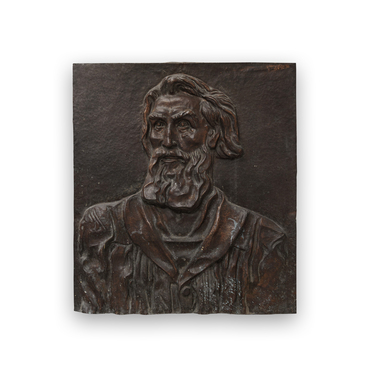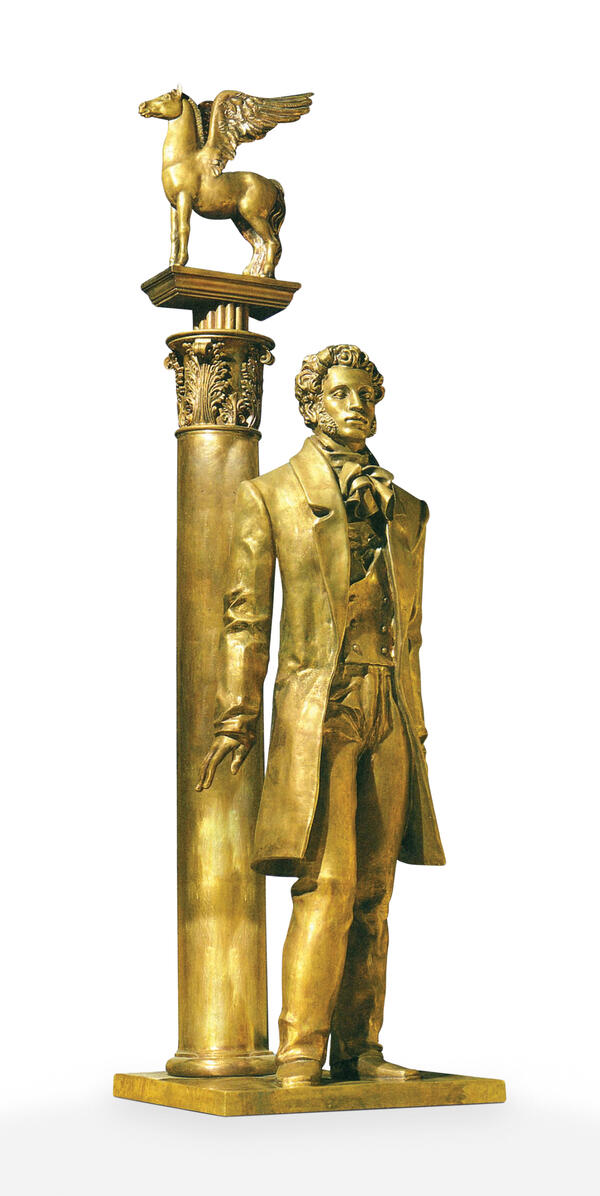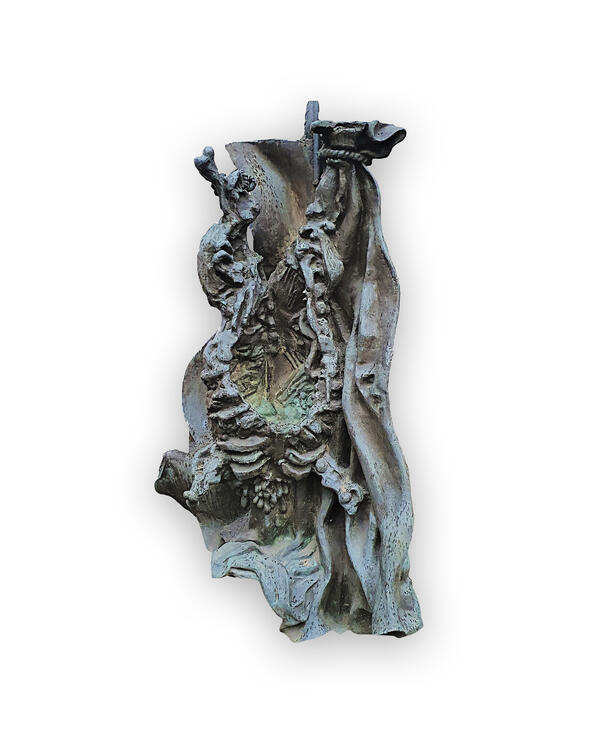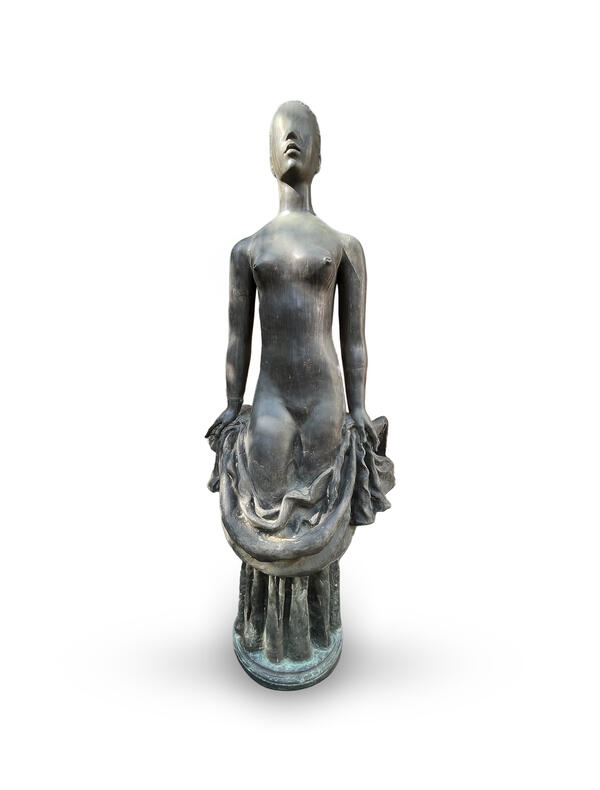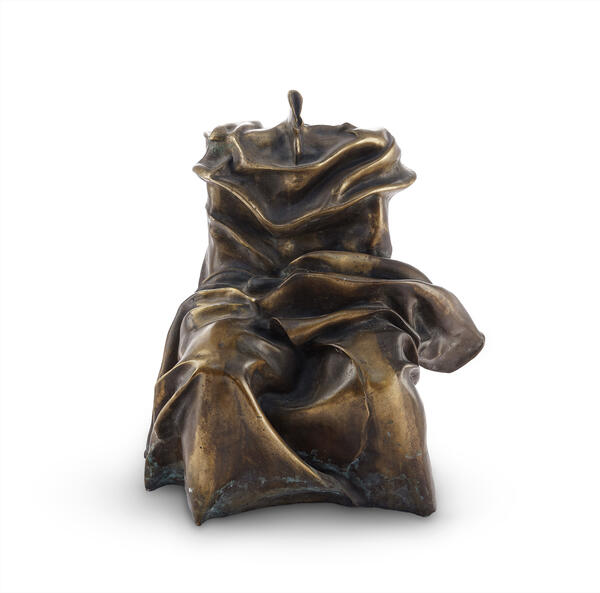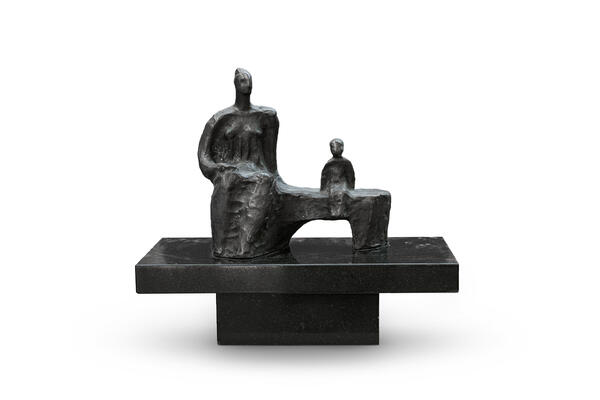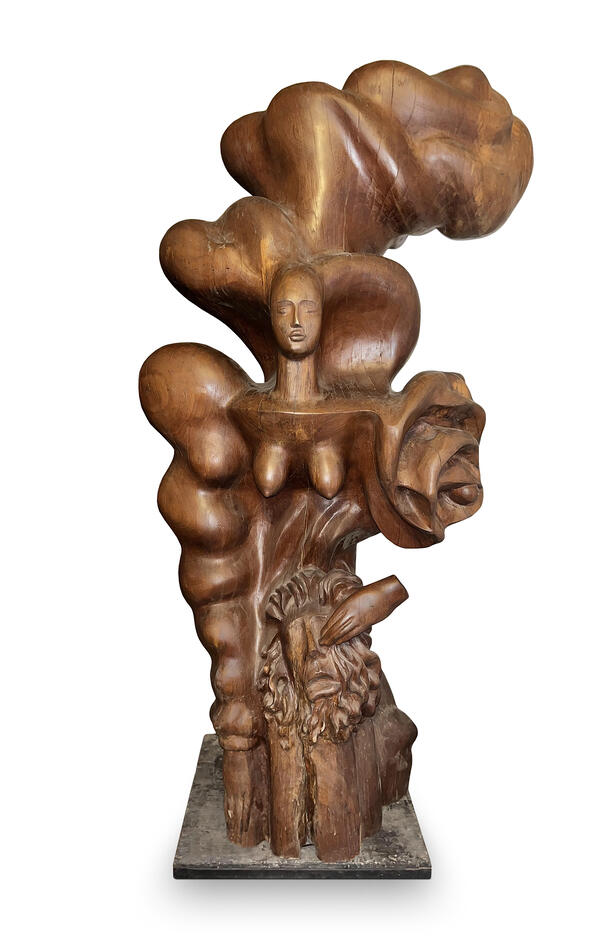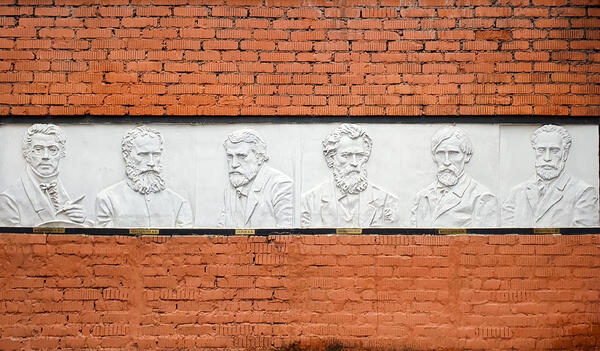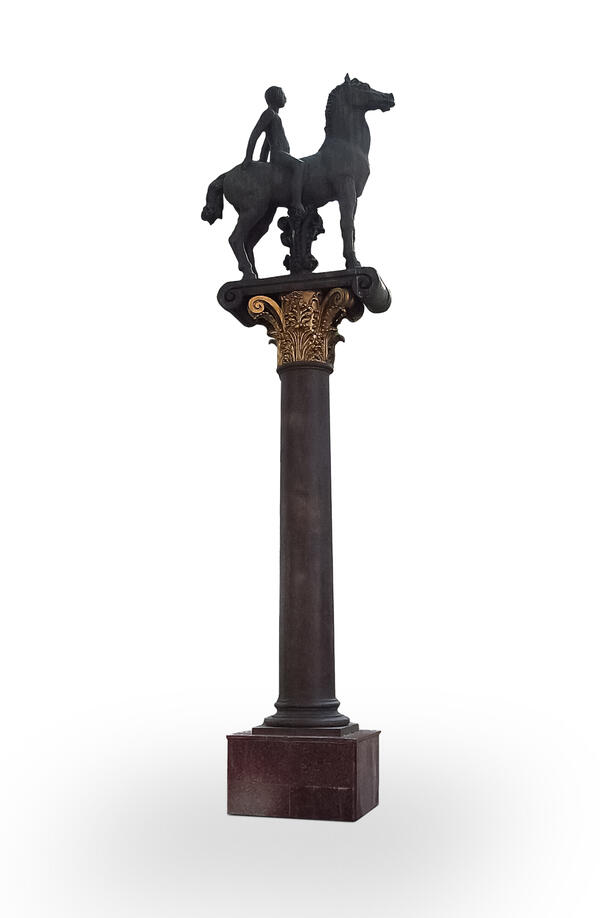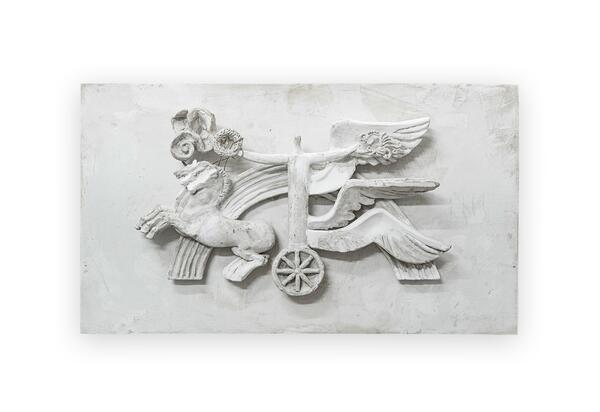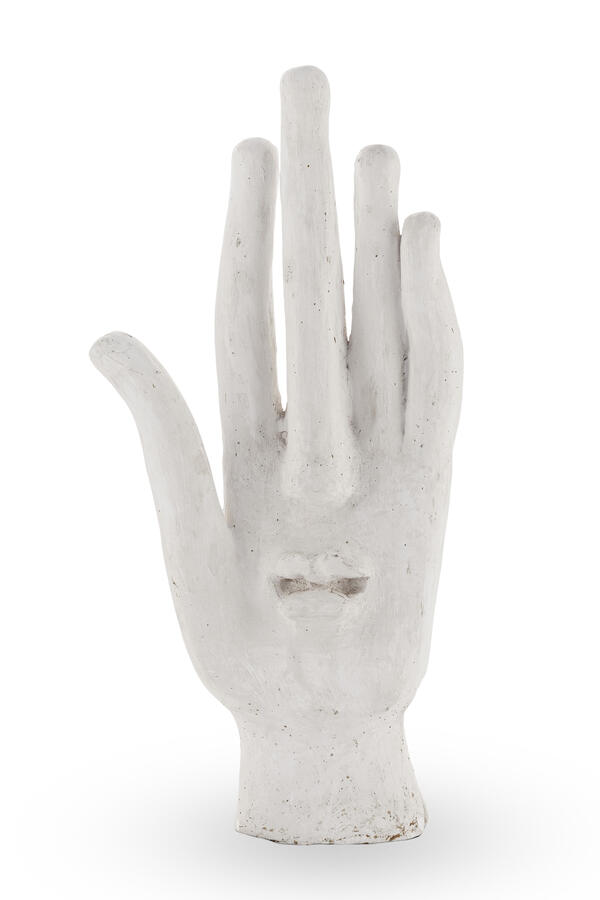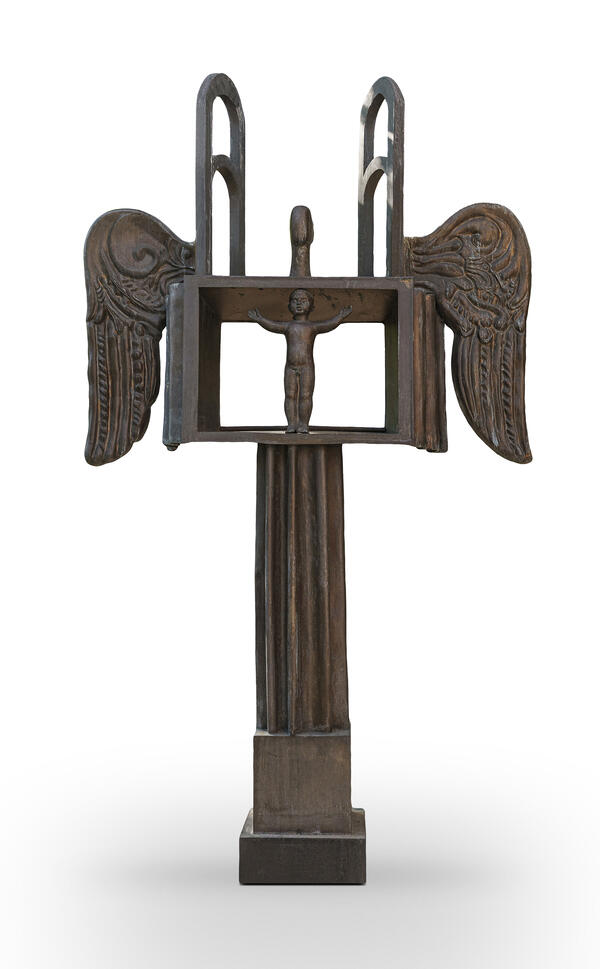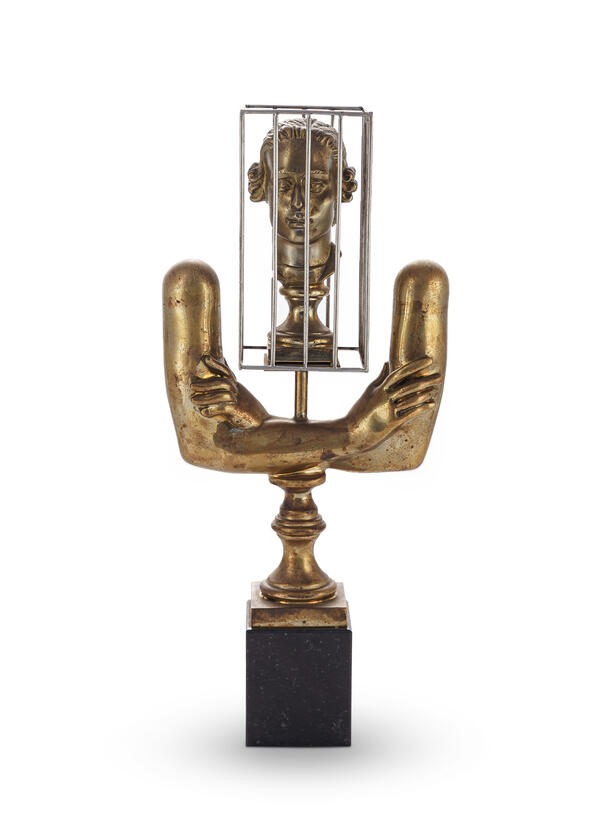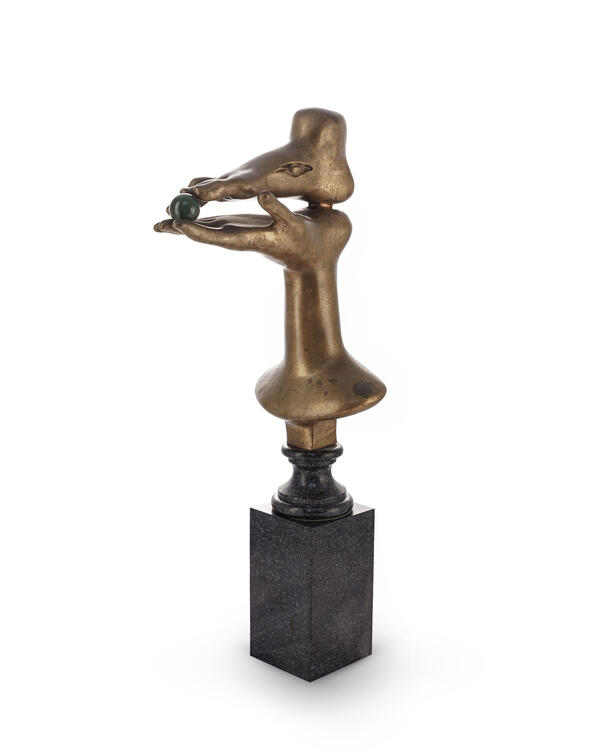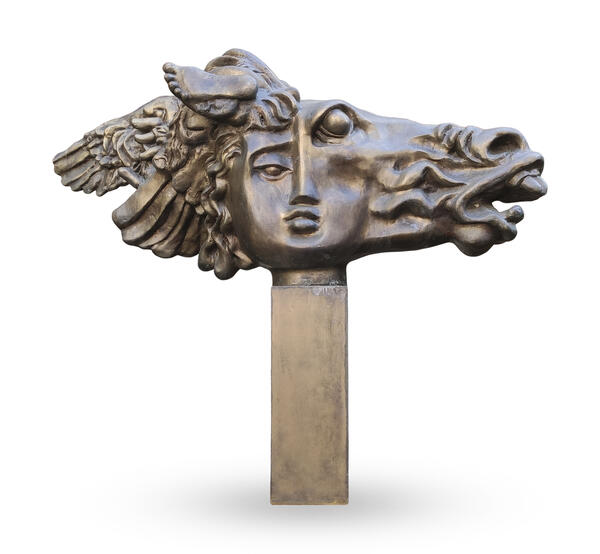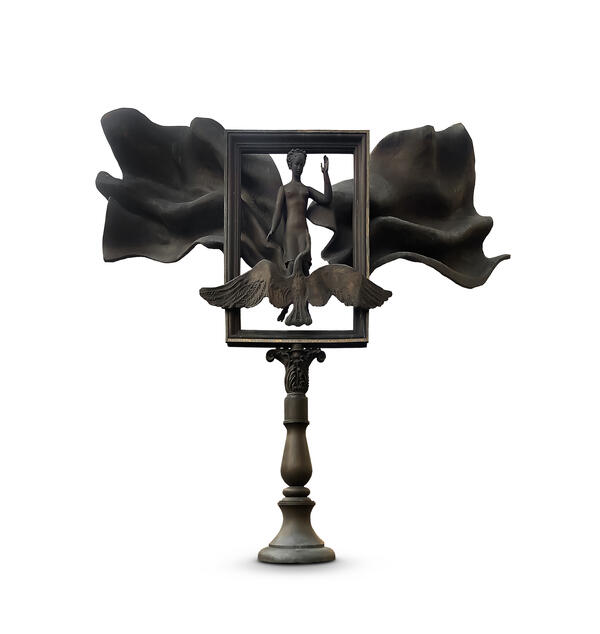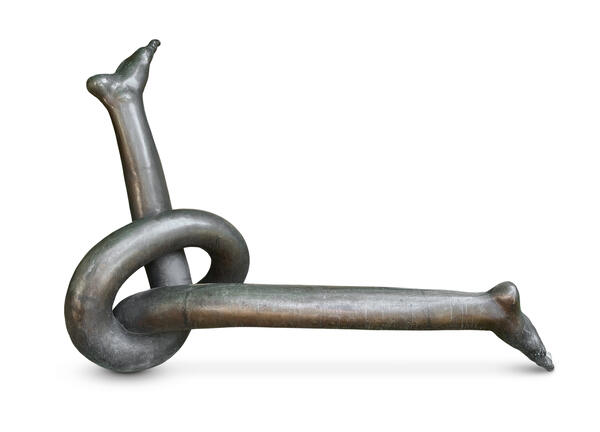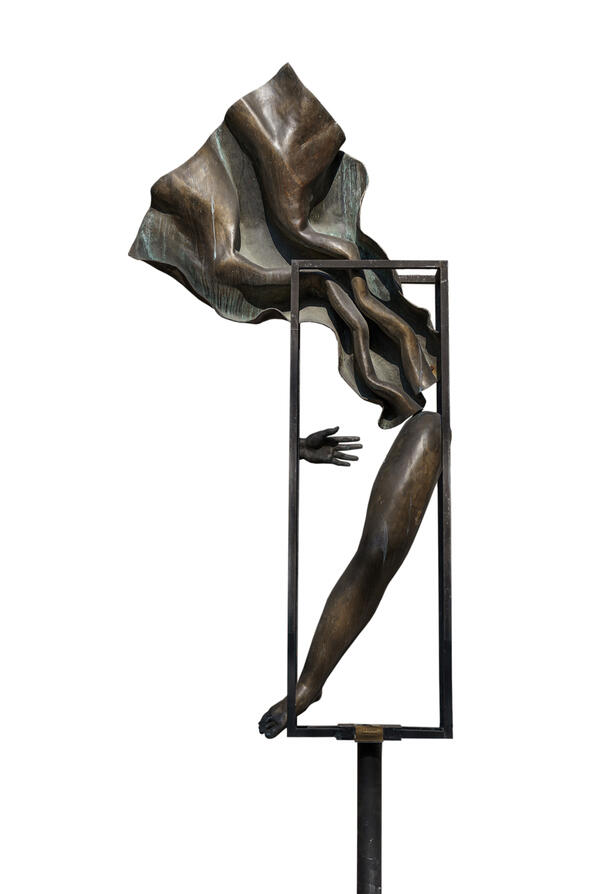The sculpture “Allegory of Spring” is a symbolic female figure. The woman wears long, loose clothing and raises her arms in prayer, imitating the iconographic type of the Virgin Orans. A rural landscape is depicted on her chest from an unusual bird’s-eye view. It features a house, farmland, grazing horses, and a resting peasant. With their small size, three-dimensional figures emphasize the monumental and universal nature of Mother Earth, frozen in the posture of the Mother of God.
The story behind this sculpture is associated with the Soviet film director Andrei Tarkovsky, who was a friend of Alexander Burganov from the time they were students until he emigrated. Once, the two were discussing art on board a plane. They looked out the window and admired the view from above. Later, Alexander Burganov created a plaster sculpture “Village”.
In 1969, inspired by Andrei Tarkovsky’s historical and philosophical drama “Andrei Rublev”, which was released in 1966, Alexander Burganov decided to create a copper sculpture using the technique of sand casting. This method was inspired by an episode in Tarkovsky’s film where a young craftsman, played by Nikolai Burlyaev, casts a huge church bell.
As a result, the sculpture had a textured surface — ragged and rough. This texture, along with the minimalism and lack of unnecessary details, reflected the artistic devices of the Sixtiers and the austere style that emerged in Soviet art during that period.
The art movement known as the austere style originated in the 1960s. It was influenced by the Khrushchev Thaw. The first artists to respond to changes in the political climate were writers and filmmakers. They began to focus on the “truth of life” of ordinary people, abandoning any pathos and embellishment. Artists and sculptors followed suit. They turned to new subjects and created works featuring ordinary soldiers, workers, geologists, teachers, and peasants, their everyday labor and heroic deeds that were not always easy to notice. To create these images, artists did not use decorative elements and instead resorted to simple, clear silhouettes and lines. All of this is reflected in Alexander Burganov’s sculpture “Allegory of Spring”.
Although the landscape is not a common theme in sculpture, in his “Allegory of
Spring”, Alexander Burganov found a unique innovative way to represent a
Russian landscape.


